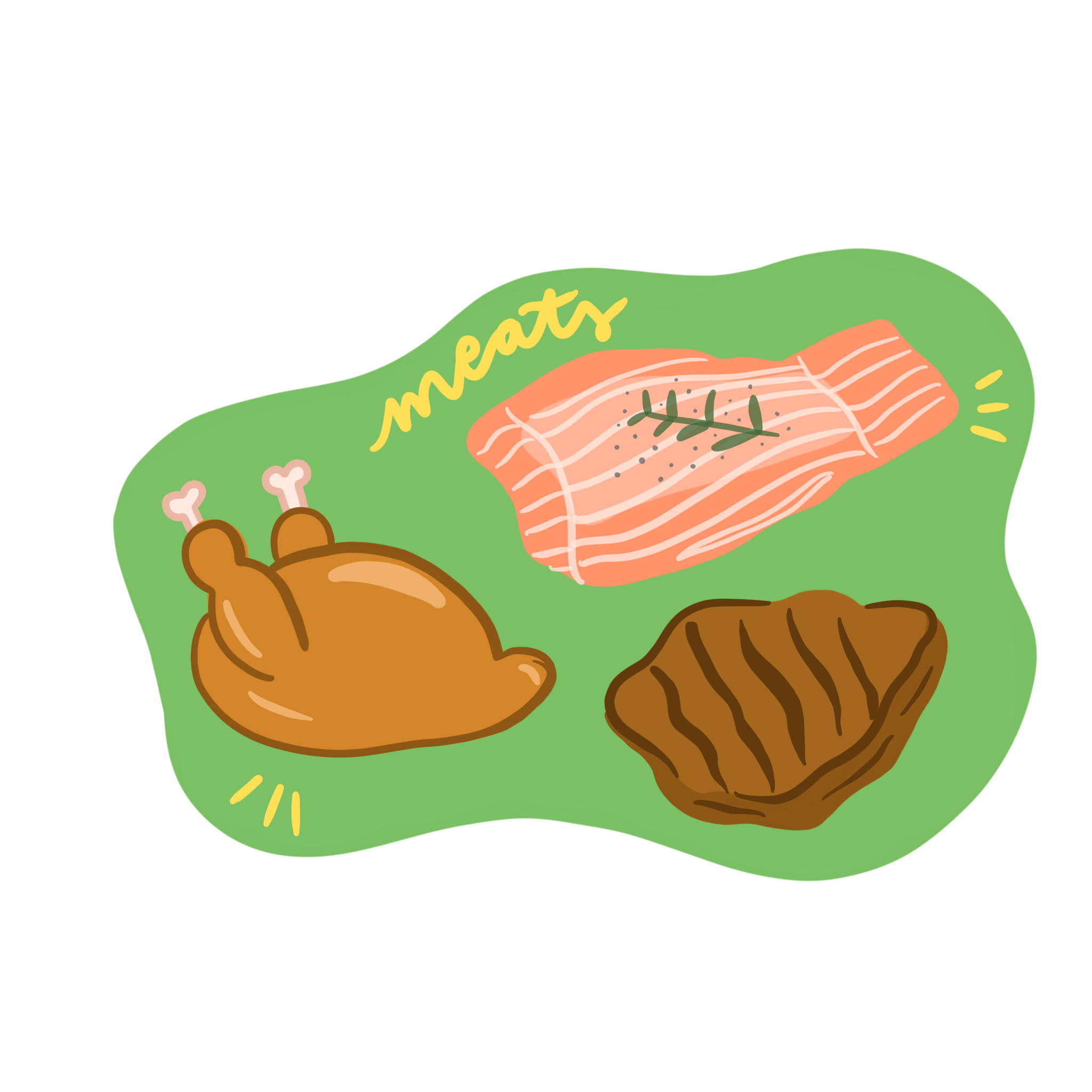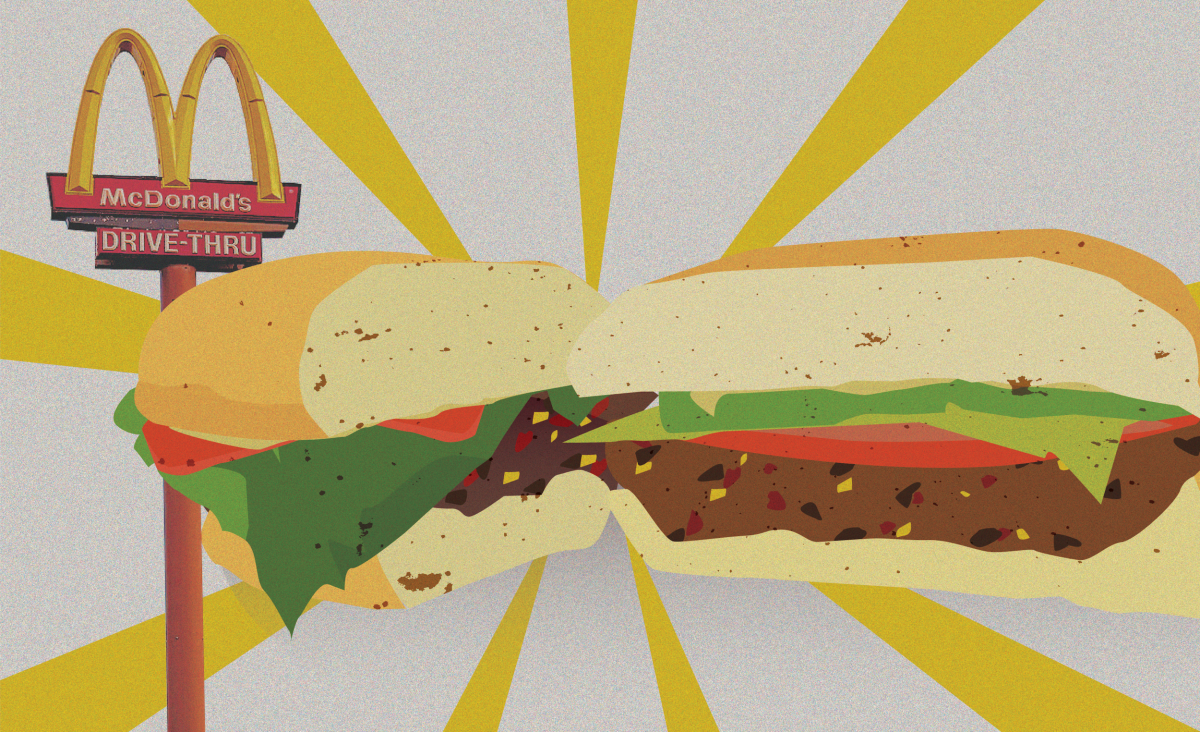Resisting the late night snacks that accompany studying and the convenience of food delivery services can be a challenge for college students. When fatigue and weight begin to increase as a result of poor dietary habits, students can consider trying Whole30.
Story by Abby Moore
Illustrations by Bolora Munkhbold
Whole30 was created in 2009 by Certified Sports Nutritionist Melissa Hartwig who claims on her website that the diet is life-changing. Most fad diets result in temporary weight loss but do not achieve overall improvement in nutrition. Unlike fad diets, Whole30 aims to establish a permanent change in the way one views and consumes food.
Dieters follow a thirty-day process of elimination in which specific food groups are stripped from the diet completely. These foods groups include sugar, alcohol, grains, legumes, and dairy. Permitted foods include meat, seafood, vegetables, eggs, certain fruits, nuts and even salt. Following the first thirty days, a slow reintroduction of eliminated foods should reveal any present allergies or intolerances.
Bailey Schmidt, an elementary education sophomore at the University of Texas at Austin, started using Whole30 to mark the beginning of a new school year. She committed to the diet along with her roommates and noted the importance of having a good support system. Schmidt says she decided to try the diet just to see how it would affect her.
Though the diet didn’t uncover any food intolerances, it did have positive results. “I just felt better about myself,” Schmidt says. She emphasized her increase in overall mood and energy levels, especially around 3:00 p.m. when a midday slump would typically ensue. After the thirty days, Schmidt says she learned to “incorporate its ideals into normal life.”
Though not all Whole30 participants complete the diet, they can still reap benefits from the process. Kate Orsini, a petroleum engineering sophomore at UT, stopped the diet early. Orsini was on day fifteen when a biking accident left her in scratches and in serious need of a milkshake. During the process, she says she managed to feel less fatigued but “the changes were more noticeable after stopping.”
Bringing gluten back to her diet revealed a sensitivity that was previously unidentified. “It changed my diet in the long-run,” Orsini says. “I’ve definitely scaled back on gluten and try to avoid eating it past noon.” Making food in a timely manner and keeping meals from becoming monotonous were challenges for Orsini, but she says that “if you have the time, opportunity and resources, you should do it.”
Discovering adverse reactions to food is not always a result. For Natasha Pedro, an elementary education sophomore at UT, the main benefit was learning about and creating new recipes. “I loved the concept of living independently,” Pedro says.
Furthermore, Pedro became more aware of the way food made her feel. “I discovered what was fueling me,” Pedro says. Although she still enjoys the occasional Oreo and is sure to incorporate a healthy amount of bread into her diet, Pedro says she has become more conscientious of what she consumes.
The Whole30 Diet has a strict no scale policy. Its purpose is to implement healthy living rather than a focus on body image. Regardless of the policy, Schmidt, Orsini and Pedro all mentioned weight loss as a result. “I felt better and leaner,” Pedro says. “It was not a primary goal but definitely a benefit.”
Whether you intend to lose weight or simply develop a healthier lifestyle, Whole30 can be a good place to start.














































